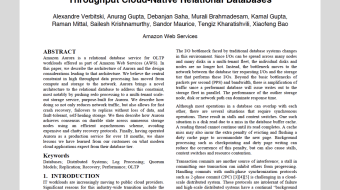Customer-obsessed science


Research areas
-
September 26, 2025To transform scientific domains, foundation models will require physical-constraint satisfaction, uncertainty quantification, and specialized forecasting techniques that overcome data scarcity while maintaining scientific rigor.
-
Featured news
-
2024Graph machine learning (GML) is effective in many business applications. However, making GML easy to use and applicable to industry applications with massive datasets remain challenging. We developed GraphStorm, which provides an end-to-end solution for scalable graph construction, graph model training and inference. GraphStorm has the following desirable properties: (a) Easy to use: it can perform graph
-
ACL Findings 20242024Leveraging external knowledge is crucial for achieving high performance in knowledge-intensive tasks, such as question answering. The retrieve-and-read approach is widely adopted for integrating external knowledge into a language model. However, this approach suffers from increased computational cost and latency due to the long context length, which grows proportionally with the number of retrieved knowledge
-
2024We focus on the task of learning the value function in the reinforcement learning (RL) setting. This task is often solved by updating a pair of online and target networks while ensuring that the parameters of these two networks are equivalent. We propose Lookahead-Replicate (LR), a new value-function approximation algorithm that is agnostic to this parameter-space equivalence. Instead, the LR algorithm
-
Query Auto-Completion (QAC) is a fundamental component of user search experience on e-commerce websites. It assists in finding userintended products, by automatically presenting search queries as users typing in the search bar. Traditional QAC systems build upon query popularity to suggest a list of potential completions, but they fall short for unforeseen search prefixes. A generative Large Language Model
-
IEEE RO-MAN 20242024For social robots operating in home environments, identifying appropriate parking locations which are “out of the way” is a challenging and multi-faceted problem. This paper proposes a solution to one core aspect of that problem, specifically a model for estimating locations where the robot may block walking paths through narrow spaces. For generality, this model assumes no a priori knowledge about user
Collaborations
View allWhether you're a faculty member or student, there are number of ways you can engage with Amazon.
View all














































